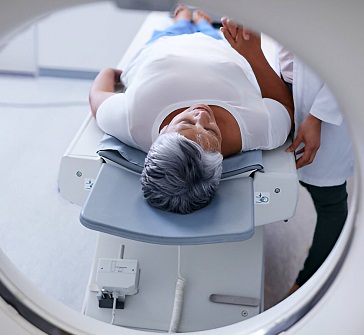 Book Appt.
Book Appt.
 Call Now
Call Now


Lymphoma is a broad term encompassing a group of cancers that originate in the lymphatic system, a vital part of the body's immune system. It involves the uncontrolled growth of lymphocytes, a type of white blood cell, leading to the formation of tumors in lymph nodes and other lymphatic tissues. Lymphoma can occur in various forms, each with its unique characteristics, making it essential to comprehend its types, potential causes, and available treatment options.
Types of Lymphoma
Causes and Risk Factors
The exact causes of lymphoma remain unclear, but several factors may contribute to its development:
Symptoms and Diagnosis
Symptoms of lymphoma can vary depending on the type and location of tumors. Common signs include painless swollen lymph nodes, unexplained weight loss, fatigue, night sweats, and fever. Diagnosis typically involves a combination of medical history review, physical examination, imaging studies (like CT scans or PET scans), and biopsy to analyze tissue samples.
Treatment Options
The choice of treatment for lymphoma depends on factors such as the type, stage, and location of the cancer, as well as the patient's overall health. Common treatment modalities include:
Prognosis
Advancements in research and treatment have significantly improved the outlook for individuals with lymphoma. The prognosis depends on factors like the type and stage of lymphoma, the patient's overall health, and how well the cancer responds to treatment. Regular follow-up care and survivorship plans are crucial for monitoring any potential recurrence and managing any treatment-related side effects.
Conclusion
Lymphoma is a complex group of cancers that require a multidisciplinary approach to diagnosis and treatment. Understanding its various types, potential causes, and available treatment options is crucial for both patients and healthcare professionals. With ongoing research and advancements in medical interventions, the outlook for individuals diagnosed with lymphoma continues to improve, offering hope for a brighter future for those affected by this disease.
SHALBY Sanar International Hospitals provides extensive medical procedures backed up with our state-of-the-art technology and a team of highly qualified & experienced clinical experts.

Grade 2 Endometrium Cancer | Ms. Robiyakhon | Uzbekistan | Dr. Archit Pandit | SHALBY Sanar

Male Breast Cancer Recovery Story | Dr. Archit Pandit | Cameroon | SHALBY Sanar

Ms. Nafisa’s Inspiring Breast Cancer Recovery | Dr. Archit Pandit | Uzbekistan | SHALBY Sanar International Hospitals

Stage4 colon cancer is curable - Colon cancer with liver metastasis | Kenya | Dr Archit Pandit

Patient from Kenya Treated by Dr. Archit Pandit | SHALBY Sanar International Hospitals

Double Cancer Victory: Mrs. Salma Kapoor's Inspiring Recovery Story | Dr. Archit Pandit

Patient from Uzbekistan Treated by Dr. Archit Pandit | SHALBY Sanar International Hospitals

Patient from Uzbekistan Treated by Dr. Archit Pandit | SHALBY Sanar International Hospitals

Successful Carcinoma Buccal Mucosa Surgery of a Patient from Nigeria by Dr. Archit Pandit

Successful Colon Cancer Surgery of Mr. Faraidun Kaka Bra Amin Amin's from Iraq | Dr Archit Pandit

Miraculous Recovery of a patient from Uzbekistan battling Ovarian Cancer | Dr. Archit Pandit

Successful Cancer Detection & Surgery by Dr. Archit Pandit | SHALBY SHALBY Sanar International Hospitals

Successful Colon Cancer Treatment of a patient from Iraq by Dr Archit Pandit | Surgical Oncology

Successful Glottis Mass & Carcinoma Vocal Cord Treatment of a patient from Iraq by Dr Archit Pandit

Successful Stage 4 Colon Cancer Treatment of a patient from Kenya by Dr Archit Pandit

Surviving the Odds: 56-Year-Old's Journey with Recurrent Carcinoma Vocal Cord | Dr. Archit Pandit

Surviving Recto-Sigmoid Cancer: Mr. Syamand Ahmed's Inspiring Journey

Success Story: Iraqi Patient's Liver Tumour Treatment at SHALBY Sanar International Hospitals

Cytoreductive Surgery Success: Iraqi Patient's 30cm Ovarian Tumor Removed Safely

Beating Liver Cancer: Mr. Abdirashid's Inspiring Story

Ms. Nejood's Success Over Pancreatic Cancer: A Remarkable Journey

Transforming Smiles: Revolutionary Buccal Commando Procedure

Wide Local Excision Surgery & Microvascular Reconstruction of a Cancer patient

Successful Surgery of Esophgeal Cancer

Successful Lung Cancer Surgery of Ms. Jerioth Wanjiru from Kenya

Para Thyroidectomy on Pt Jawad Kadhim Tweli from Iraq

Dr Archit Pandit discusses the fascinating case of Geeta Rani
Our doctors pen down their research findings and experiences from time to time. Their words provide deep insight into the latest techniques, technologies and other advancements in healthcare. It provides expert answers to all kinds of health questions for real-life issues.
VIEW ALL




Since the day of its foundation, SHALBY Sanar International Hospitals is committed to provide comprehensive healthcare services. It regularly organizes awareness programs in its premises and encourages outdoor healthcare activities and camps with an intent to put focus on preventive healthcare.
VIEW ALL